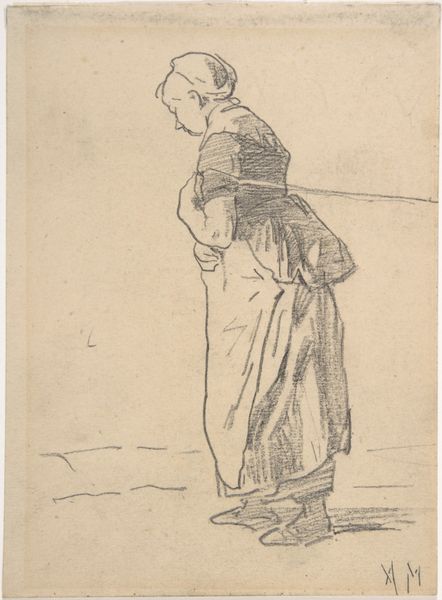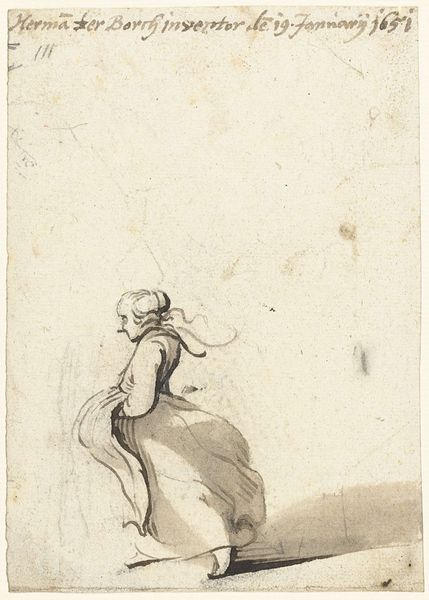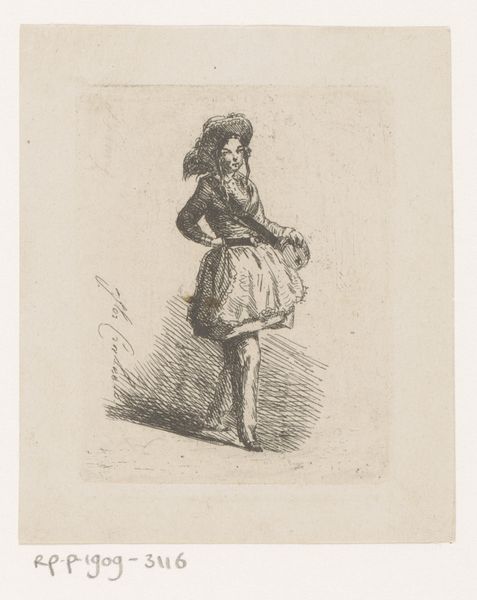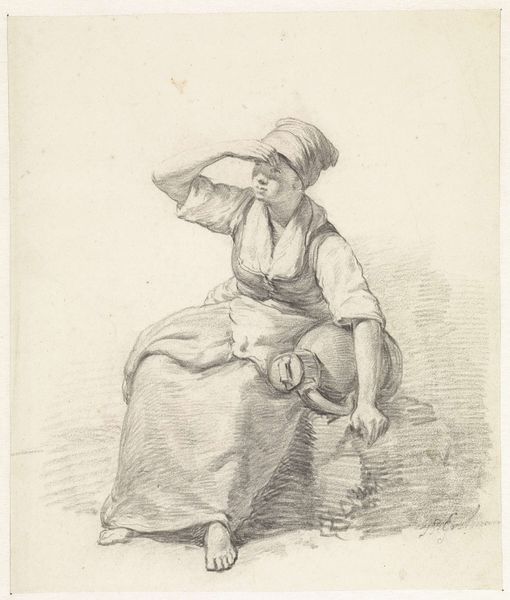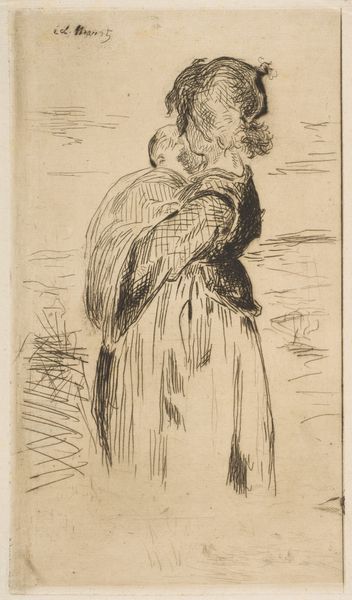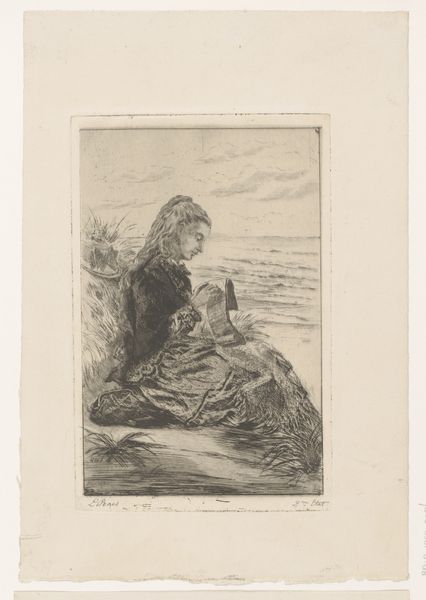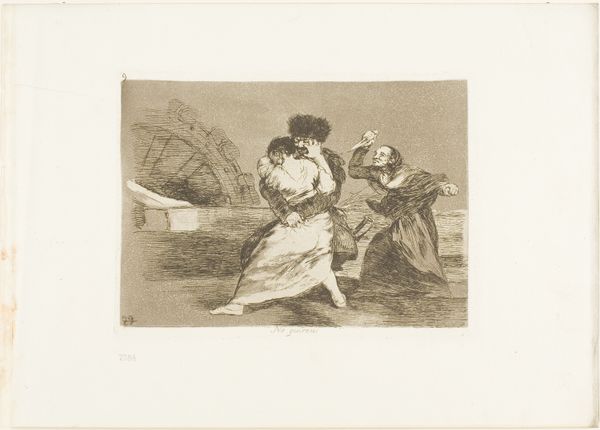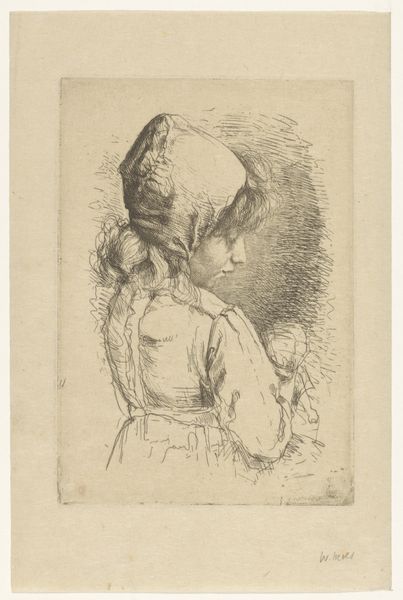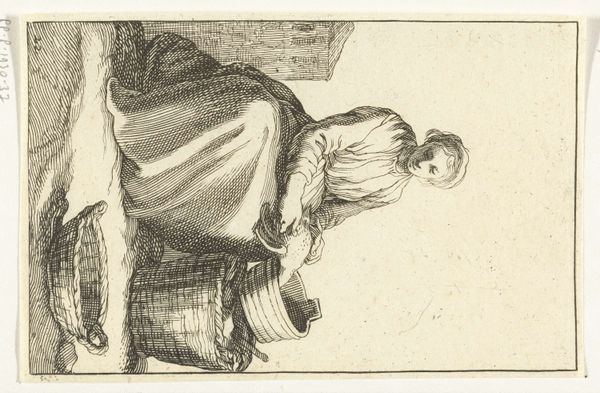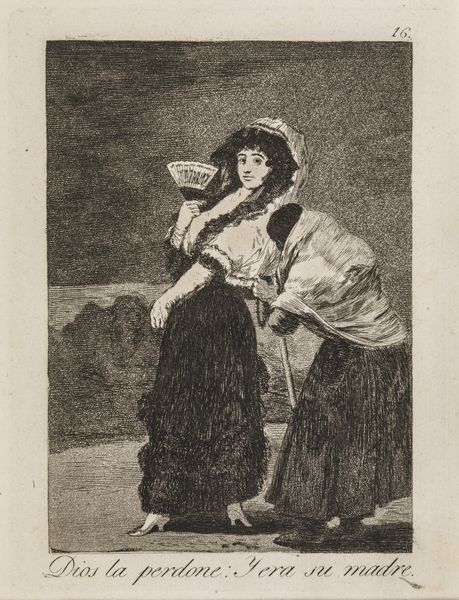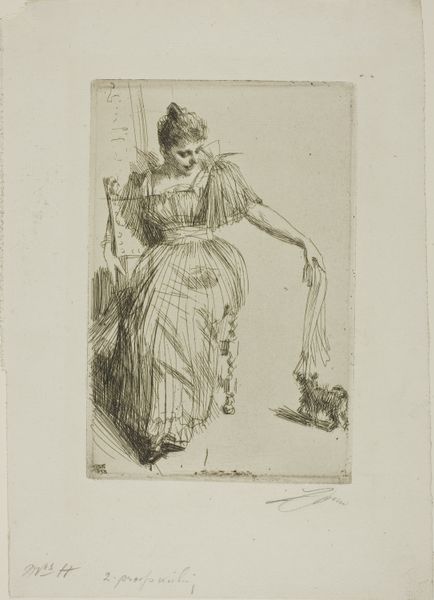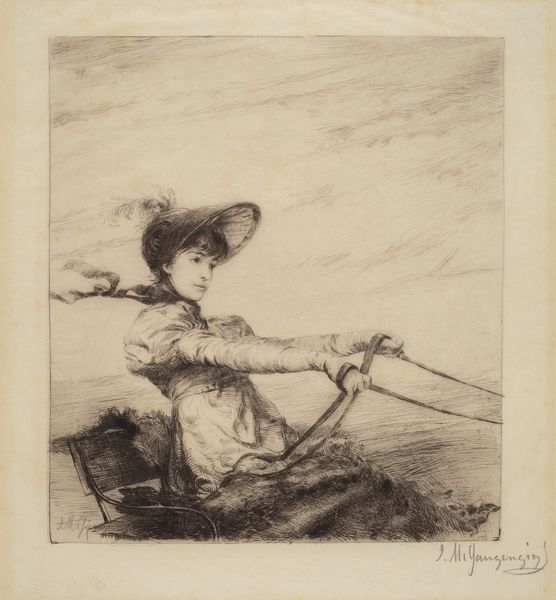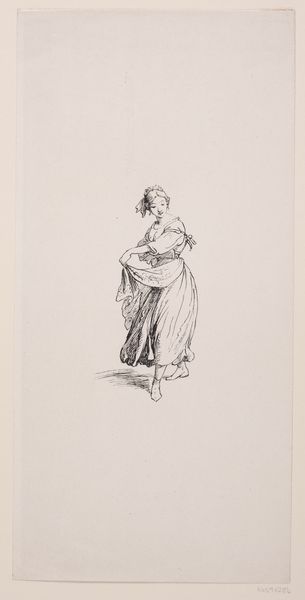
drawing, lithograph, print, paper, pencil, graphite
#
portrait
#
drawing
#
narrative-art
#
lithograph
# print
#
pencil sketch
#
figuration
#
paper
#
romanticism
#
pencil
#
graphite
#
history-painting
#
realism
Dimensions: 246 × 199 mm (image); 357 × 273 mm (sheet)
Copyright: Public Domain
Curator: Honoré Daumier’s lithograph, "An Activist, from Les Femmes Socialistes," created in 1849, offers us a glimpse into the political and social landscape of the time, now residing here at the Art Institute of Chicago. Editor: My first impression is the raw energy in the sketch-like quality of the print; you feel the wind whipping at their clothes, and an urgency in the forward stance of the standing figure. It feels charged. Curator: Absolutely. Daumier, with his characteristic use of lithography, uses bold strokes to define the figures. We see a strong woman standing with windblown garments, seeming to gesture towards a young girl seated and looking up at her. It speaks to themes of mentorship, legacy, and female participation in social movements, but what were the conditions of its making? Consider the accessibility afforded by printmaking, how many hands touched this image in the process of production? Editor: Daumier produced this work amidst the burgeoning socialist and feminist movements in France. The artwork seems to participate in discourses around social justice. Note the gaze of the girl, an almost awestruck sense of hope—perhaps symbolic of future generations. I think Daumier is explicitly trying to enshrine women within a socialist historical narrative. Curator: You raise an important point regarding its construction within historical narratives. Lithography enabled widespread distribution, serving a vital role in disseminating political ideologies. Daumier expertly uses readily available materials - graphite, paper, printing press - to create images circulated among the working classes. He is blurring those lines between 'high' and 'low' art forms by participating in this form of visual activism. Editor: What also interests me are the implications of the work's title: “An Activist.” The woman becomes an archetype—she signifies a call to action beyond this particular, almost abstracted depiction. Her simplified depiction amplifies her potential role. Curator: It's also crucial to note the implications of Daumier’s choice to create an editioned print during a period of censorship. He's strategically deploying this reproductive medium to push the boundaries of what could be publicly expressed. Think of the material risks he would have undertaken to realize this artistic vision. Editor: Looking at this work, knowing the tumultuous period of its creation, reminds us of the enduring power of images to inspire social change and reflect shifting cultural values, particularly when they amplify the roles women have taken throughout history. Curator: A profound illustration of art as a medium, deeply entangled in social change and activism and crafted with materials and a method strategically deployed for accessibility and broad impact.
Comments
No comments
Be the first to comment and join the conversation on the ultimate creative platform.
